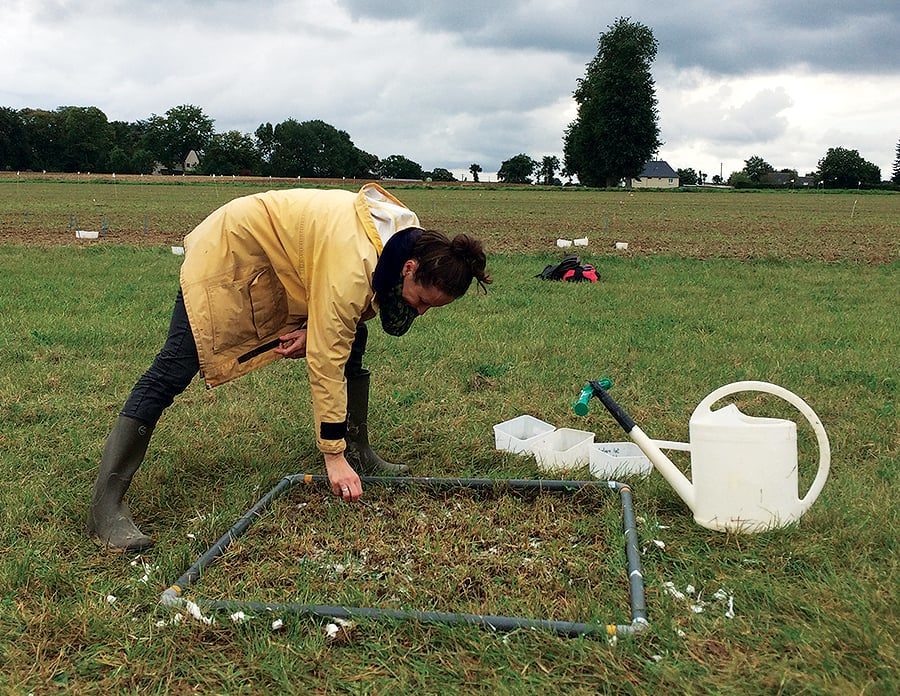No-Till Farmer
Get full access NOW to the most comprehensive, powerful and easy-to-use online resource for no-tillage practices. Just one good idea will pay for your subscription hundreds of times over.

DETAILS MATTER. It’s important to comply with proper protocols when using the mustard method for sampling earthworm populations, paying attention to the chemical mixing, area sampled and harvesting of the worms. This method should be repeated in a minimum of three areas to get the most accurate results, researchers say.
(Editor’s Note: This article is being shared from an earlier edition of Direct Driller, a no-till magazine published in the U.K.)
The undisputed indicator of healthy soil is the presence of earthworms in the soil profile. There are various methods of sampling or extraction to estimate the level of worm communities and analyze the different species present.
But what method is best? Two extraction methods — one chemical and one mechanical — are commonly used in the field. The chemical approach involves pouring a mustard solution onto the soil while the mechanical method involves simply using a good spade.
Mustard contains an active ingredient, allyl isothiocyanate (AITC) which has urticating, or stinging, properties. As soon as worms feel the presence of the molecule they have only one desire — to flee.
According to protocols clearly defined by the Agricultural Observatory of Biodiversity, mechanical extraction consists of sampling — at several different locations representative of the land parcel — a block of soil corresponding to the dimensions of the spade used, then “delicately” dissecting the soil block to account for the current earthworm community.
For optimal earthworm activity, choose a time when the air temperature is ‘normal’ and the soil is moist.
Materials required: